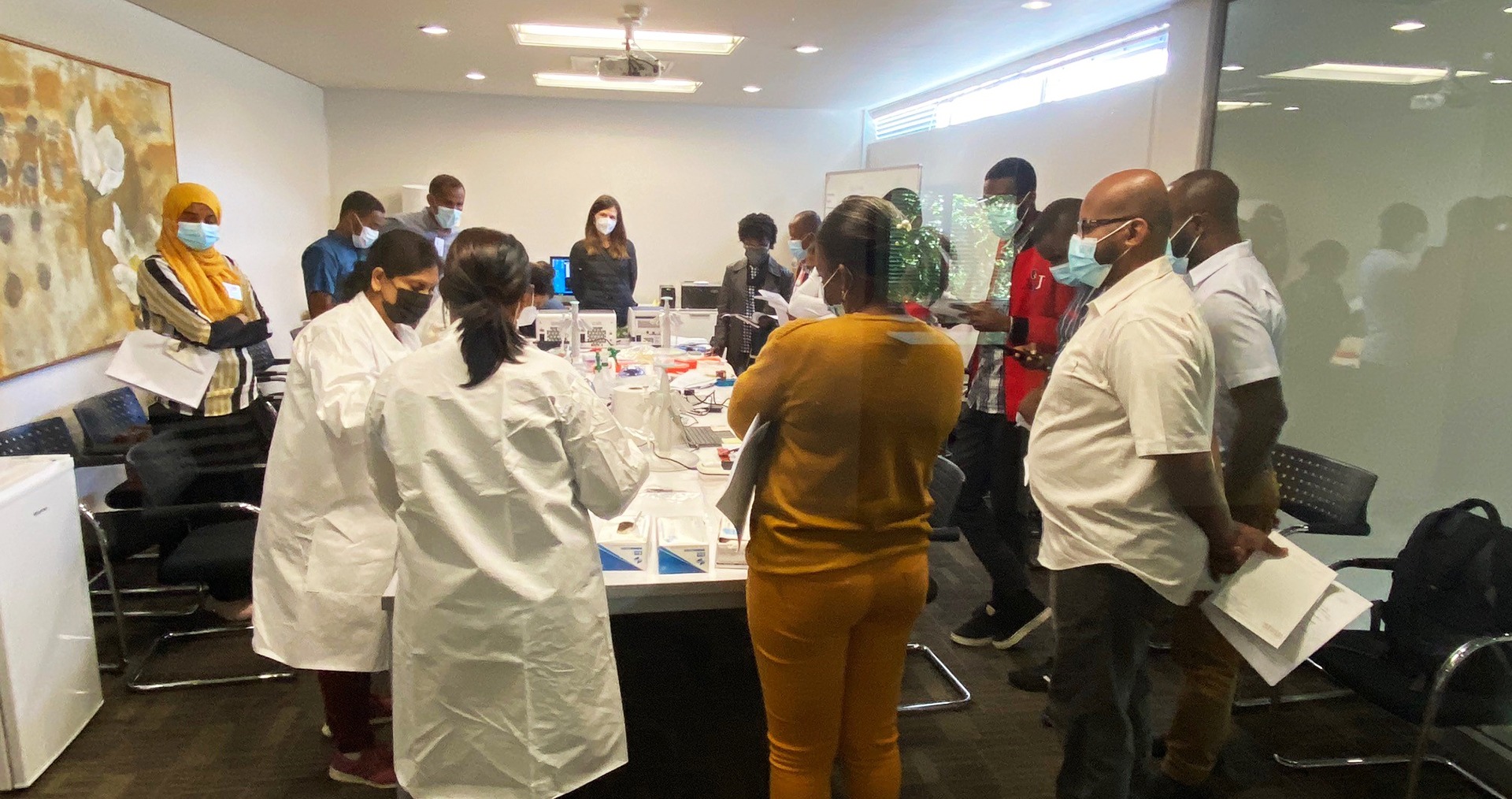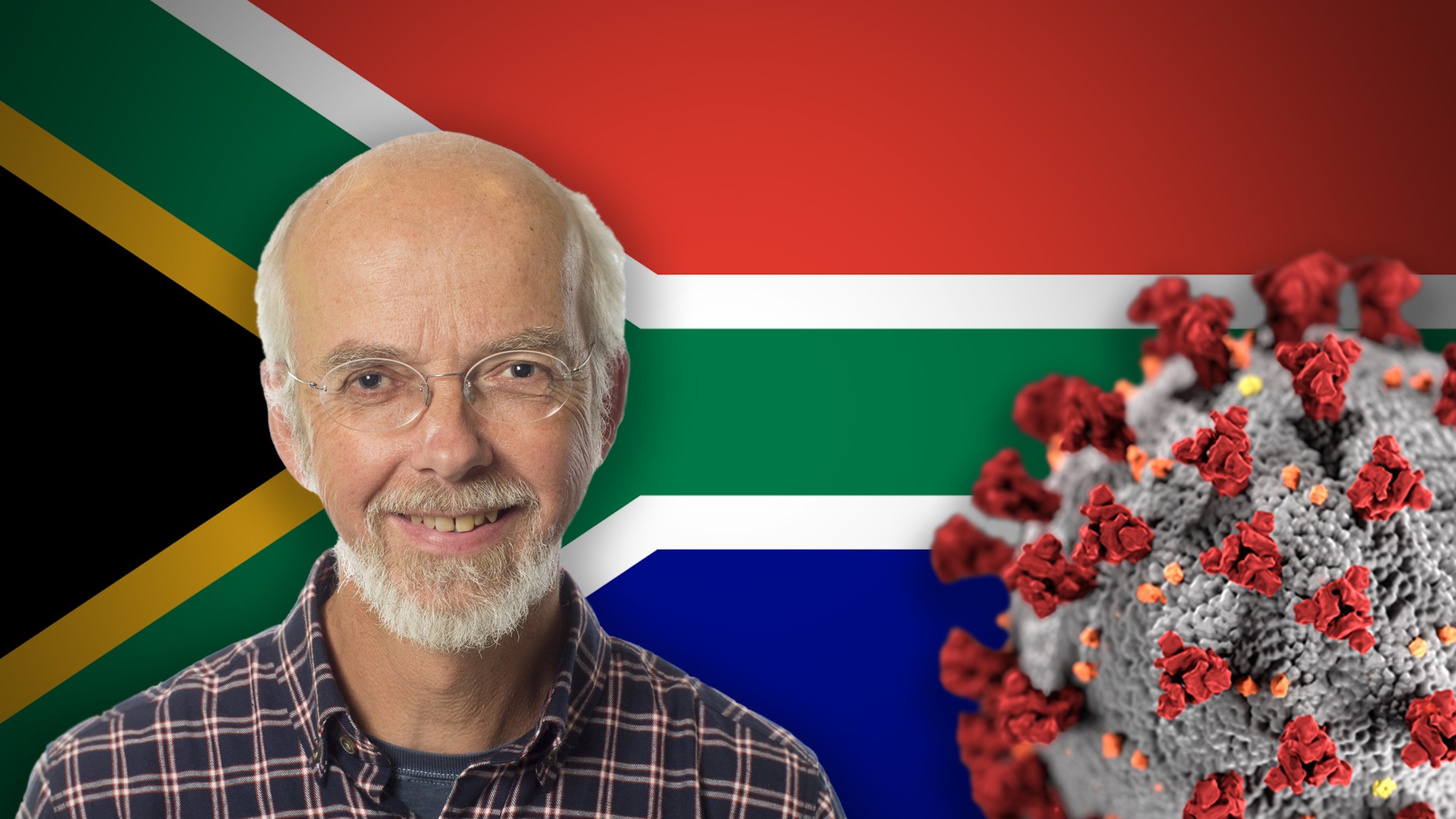Omicron: What can we learn from South Africa’s swift actions?
On November 26, 2021, the technical Advisory Group on Virus Evolution (TAG-VE) of the WHO designated the B.1.1.529 variant of the COVID-19 virus variant of concern (VOC). The new variant, also known as Omicron, is believed to pose an elevated risk due to its multiple mutations that could affect its ability to spread, as well as the severity of disease. At present, it is clear that it spreads more rapidly, but no data so far indicates that it causes a more severe disease.
During the last couple of weeks, South Africa has shown that it is a country to be reckoned with when it comes to COVID-19 research, fast and efficient handling of COVID-19 samples and infection tracking. Unfortunately, they have had to pay a high price for their discovery of Omicron, as countries such as Britain quickly closed their borders to travelers from South Africa.
But what can the rest of the world learn from South Africa? Professor Ulf Gyllensten, SciLifeLab’s former Scientific Director at Uppsala University, and former Director of the Genomics Platform, is currently on site in South Africa and has been able to get an overview of the current situation
Why do you think South Africa was able to react so quickly and what bottlenecks can you identify in Sweden? What could we learn from them?
“Firstly, in South Africa, clinical samples can be sequenced without requiring additional informed consent. But don’t get me wrong, the strict rules in Sweden are good, but there should be some kind of exception in the case of pandemics”, says Ulf. “The quick handling made it possible for them to identify new variants continuously and the delay between analysis and publishing data became extremely short.
“This put South African researchers at the absolute research forefront and enabled them to rapidly share invaluable new knowledge and COVID-19 genomic sequences to the rest of the world through international databases, and is why I view them as a role model during this global medical crisis”, continues Ulf.
“At the SciLifeLab National Genomics infrastructure platform (NGI) we have enough sequencing capacity to handle all positive samples in the country, something we were prepared to do, but the opportunity was lost due to the strict rules that applies to analyses clinical samples here”, remembers Ulf.
Other bottlenecks
“Many actions taken by Sweden were actually pretty fast and the Knut and Alice Wallenberg foundation (KAW) allocated money early on to set up a pandemics lab at Karolinska Institutet, led by SciLifeLab/KI researcher Lars Engstrand, but due to the slow bureaucracy in Sweden, the wheels turned slower than expected. Due to the delay, it was very hard to sequence the different samples in real-time, making infection tracking less effective”, says Ulf.
Another significant bottleneck is the gap between Swedish research institutions/infrastructure and the Swedish healthcare sector. The healthcare sector/regions initially lacked the equipment and expertise for large scale sequencing while research infrastructures, such as SciLifeLab, was ready to play an important societal role, but was slowed down because of the rules and regulation that has not been adapted for pandemic threats.
“Swedish health care regions are independent from one another and makes their own decisions. We should really have a system that allows the government to take full control in case of national medical threats, such as pandemics. In South Africa, the rules have enabled the whole country to swiftly and effectively focus on the new variants detected, such as the Beta and later the Omicron variant”, says Ulf.
“If we can only learn one thing from all of this, it is that we have to make sure that we have the possibility to sequence clinical samples in real time and on a large scale when the next pandemic strikes. Otherwise, we won’t stand a chance of being able to catch up with the rapid events of a pandemic”, he concludes.
SciLifeLab has played an important part in South Africa’s exemplary handling of the new VOC, how?
A key figure behind the South African research infrastructure involved in the recent COVID-19 research is Professor Tulio de Olviera. A couple of years ago he visited SciLifeLab’s National Genomics infrastructure platform (NGI) and National Bioinformatics platform (NBIS) to learn about how SciLifeLab’s extensive infrastructure was built.
Armed with this new knowledge, Tulio went back to South Africa and created the KwaZulu-Natal Research Innovation and Sequencing Platform (KRISP) at the University of KwaZulu-Natal (UKZN). This was the first large-scale Next generation sequencing (NGS) platform in Africa and it came to play an important role early on in the pandemic. For instance, it was Tulio and his research team who first described the SARS-CoV-2 – 501Y.V2, or Beta variant.
For the last 20 years, Tulio have studied the outbreaks of many disease-causing organisms, such as HIV, hepatitis B and C, chikungunya, dengue, Zika and yellow fever. He recently started a shared position between UKZN and Stellenbosch University where he established a Center for Epidemic Research, Response and Innovation (CERI). This allowed him to play an important part in the description of the new Omicron variant.
To Africa, the development of an advanced research infrastructure that provides them with the tools needed to conduct their own genome research and analyze their own sample has been a huge technological success, and they do not need to send their samples abroad anymore. The next step on this journey is to build three large genomic centers equipped with large-scale NGS capabilities. One in South Africa, one in Nigeria and one In Tanzania. In addition, CERI is working with the African CDC, to build expertise and operations to be able to carry out sequencing of viruses and bacteria as a preparation for the next challenge.
A few weeks ago, CERI and the African CDC had a course with representatives from 18 African countries in how to implement NGS of COVID-19, using Oxford Nanopore. The course took place at the Wallenberg-funded STIAS (Stellenbosch Institute for Advanced Study).
“I have been at the STIAS for a couple of months now and was positively surprised that the participants could identify COVID-19 variants from 18 different African countries as well as conducting the necessary bioinformatic analysis placing the sequence variants on the global virus tree after only three days”, says Ulf.






